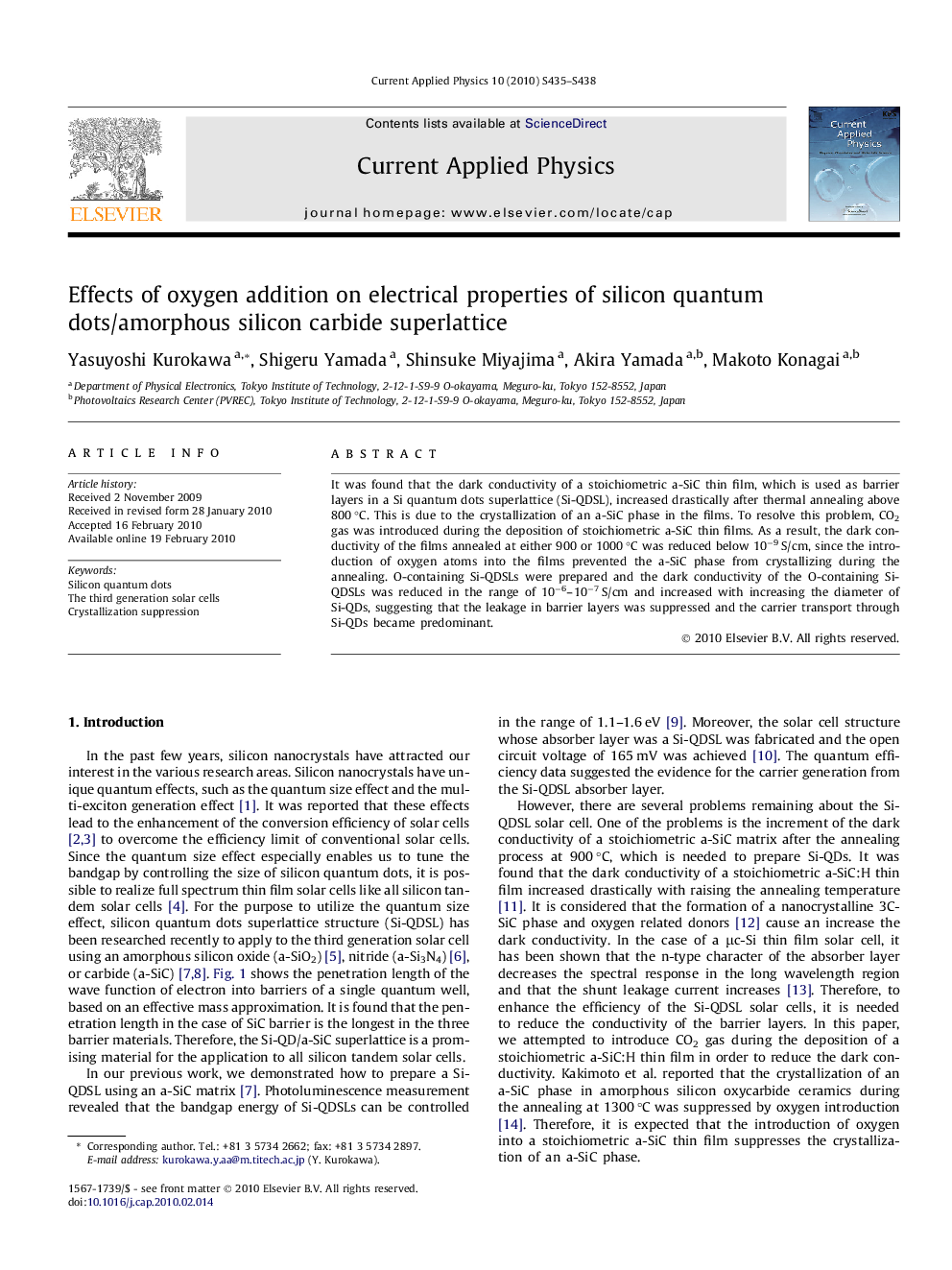| کد مقاله | کد نشریه | سال انتشار | مقاله انگلیسی | نسخه تمام متن |
|---|---|---|---|---|
| 1788794 | 1023479 | 2010 | 4 صفحه PDF | دانلود رایگان |

It was found that the dark conductivity of a stoichiometric a-SiC thin film, which is used as barrier layers in a Si quantum dots superlattice (Si-QDSL), increased drastically after thermal annealing above 800 °C. This is due to the crystallization of an a-SiC phase in the films. To resolve this problem, CO2 gas was introduced during the deposition of stoichiometric a-SiC thin films. As a result, the dark conductivity of the films annealed at either 900 or 1000 °C was reduced below 10−9 S/cm, since the introduction of oxygen atoms into the films prevented the a-SiC phase from crystallizing during the annealing. O-containing Si-QDSLs were prepared and the dark conductivity of the O-containing Si-QDSLs was reduced in the range of 10−6–10−7 S/cm and increased with increasing the diameter of Si-QDs, suggesting that the leakage in barrier layers was suppressed and the carrier transport through Si-QDs became predominant.
Journal: Current Applied Physics - Volume 10, Issue 3, Supplement, May 2010, Pages S435–S438